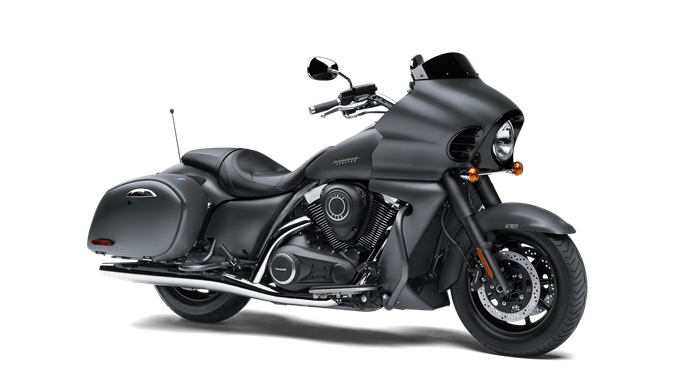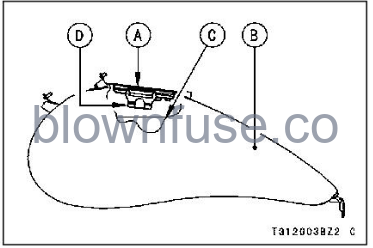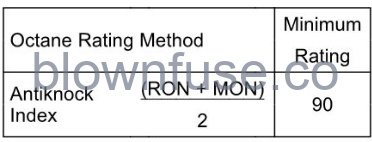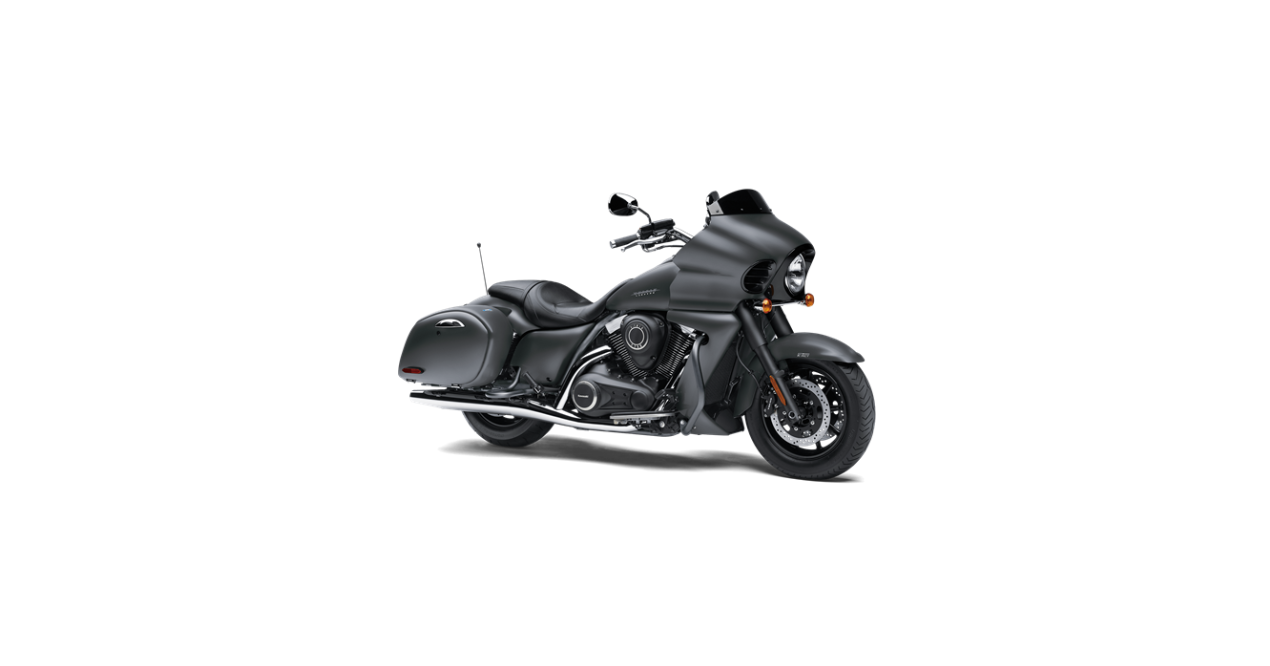2022 Kawasaki Vulcan 1700 Vaquero ABS Fuel Tank

Fuel Tank
The following octane rating gasoline is recommended in the fuel tank. Avoid filling the tank in the rain or where heavy dust is blowing so that the fuel does not get contaminated.
 A. Tank cap
A. Tank cap
B. Fuel Tank
C. Top Level
D. Filler Neck
WARNING
Gasoline is extremely flammable and can be explosive under certain conditions, creating the potential for serious burns. Turn the ignition switch to “OFF”. Do not smoke. Make sure the area is well-ventilated and free from any source of flame or sparks; this includes any appliance with a pilot light. Never fill the tank completely to the top. If the tank is filled completely to the top, heat may cause the fuel to expand and overflow through the vents in the tank cap. After refueling, make sure the tank cap is closed securely. If gasoline is spilled on the fuel tank, wipe it off immediately.
NOTICE
California models only: Never fill the tank so the fuel level rises into the filler neck. If the tank is overfilled, heat may cause the fuel to expand and flow into the Evaporative Emission Control System resulting in hard starting, engine hesitation and non-compliance with the emission regulation.
Fuel Requirement
Fuel Type Use clean, fresh unleaded gasoline with a minimum Antiknock Index of 90. The Antiknock Index is posted on service station pumps. The octane rating of a gasoline is a measure of its resistance to detonation or “knocking”. The Antiknock Index is an average of the Research Octane Number (RON) and the Motor Octane Number (MON) as shown in the table.
NOTICE
If engine “knocking” or “pinging” occurs, use a different brand of gasoline of a higher octane rating. If this condition is allowed to continue it can lead to severe engine damage. Gasoline quality is important. Fuels of low quality or not meet- ing standard industry specifications may result in unsatisfactory performance. Operating problems that result from the use of poor quality or non-recommended fuel may not be covered under your warranty.
Fuels Containing Oxygenates
Gasoline frequently contains oxygenates (alcohols and ethers), especially in areas of the U.S. and Canada that are required to sell such reformulated fuels as part of a strategy to reduce exhaust emissions. The types and volume of fuel oxygenate approved for use in unleaded gasoline by the U.S. Environmental Protection Agency include a broad range of alcohols and ethers, but only two components have seen any significant level of commercial use. Gasoline/Alcohol Blends – Gasoline containing up to 10% ethanol (alcohol produced from agricultural products such as corn), also known as “gasohol” is approved for use
NOTICE
Avoid using blends of unleaded gasoline and methanol (wood alcohol) whenever possible, and never use “gasohol” contain- ing more than 5% methanol. Fuel system damage and performance problems may result. Gasoline/Ether Blends – The most common ether is methyl tertiary butyl ether (MTBE). You may use gasoline containing up to 15% MTBE.
NOTE
Other oxygenates approved for use in unleaded gasoline include TAME (up to 16.7 0/0) and ETBE (up to 17.2 0/6). Fuel containing these oxygenates can also be used in your Kawasaki.
NOTICE
Never use gasoline with an octane rating lower than the minimum specified by Kawasaki. Never use “gasohol” with more than 10% ethanol, or more than 5% methanol. Gasoline containing methanol must also be blended with solvents and corrosion inhibitors.
NOTICE
Certain ingredients of gasoline may cause paint fading or damage. Be extra careful not to spill gasoline or gasoline oxygenate blends during refueling. When not operating your Kawasaki for 30 to 60 days, mix a fuel stabilizer (such as STA-BIL) with the gasoline in the fuel tank. Fuel stabilizer additives inhibit oxidation of the fuel which minimizes gummy deposits. Never store this product with “gasohol” in the fuel system. Before storage it is recommended that you drain all fuel from the fuel tank. See the Storage section in this manual.

